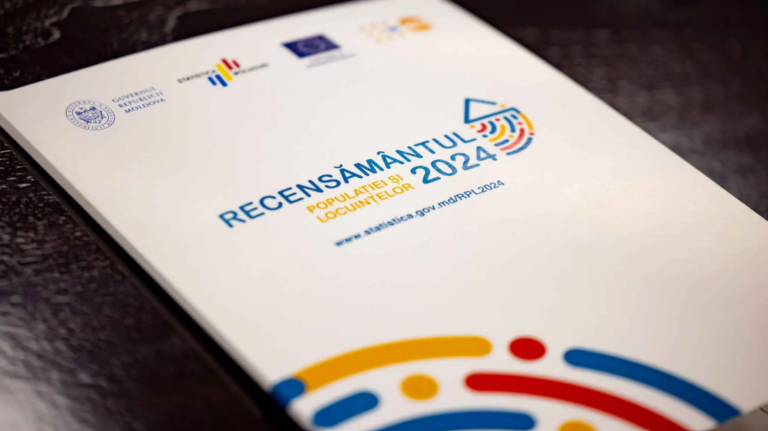The National Bureau of Statistics of the Republic of Moldova has released the preliminary results of the 2024 Population Census, conducted last year. The data shows that while 95% of the population identifies as Orthodox Christian, the country’s total population has decreased by nearly 14% compared to the previous census conducted a decade ago.
Another key finding is the growth of the urban population by almost 8%, with a particularly sharp increase in Chișinău, the capital of the Republic of Moldova.
Demographic Structure by Age
The census highlights an aging population, with a notable 18% increase in the 65+ age group, while the 15–64 age segment declined by more than 4%.
A very small 1.2% increase was recorded in the 0–14 age group, signaling ongoing demographic challenges.
Citizenship, Ethnicity, and Language
In 2014, only 5.6% of Moldovans reported having dual or multiple citizenships. In the latest census, this figure rose sharply to 15.6%, reflecting shifting national and regional affiliations.
The historical impact of Soviet occupation and re-education policies, combined with the absence of a national reintegration project with Romania, remains visible in the census data. While 77% of respondents identified as “Moldovan” by ethnicity, only 7.9% declared themselves Romanian.
However, linguistic self-identification presents a different trend:
- 49% stated their native language was “Moldovan” (a term coined by Soviet authorities),
- 31% declared their native language as Romanian,
- The remaining percentage identified with other languages.
It is important to note that Romanian was declared the official language of the Republic of Moldova on August 31, 1989, and was formally recognized as the state language in the Moldovan Constitution in 2023.
The 2024 Moldova Population Census was conducted between April 1 and July 7, with religious affiliation, ethnicity, and language recorded based on voluntary self-identification by respondents.
The Romanian Orthodox Church in Moldova
The Romanian Orthodox Church has consistently defended and promoted Romanian identity in this historical province east of the Prut River. Following the Great Union of 1918, the Archdiocese of Chișinău was elevated to the rank of a Metropolis under the Romanian Orthodox Church.
This restructuring was formalized by the 1925 Law on the Organization of the Romanian Orthodox Church, meaning that the Metropolis will celebrate its Centennial in 2025.
After decades of Soviet occupation, the Metropolis of Bessarabia was reactivated in 1992 at the request of the local faithful, marking a key moment in the revival of religious and national identity in Moldova.
Source: basilica.ro
Photo: Facebook / National Bureau of Statistics of the Republic of Moldova

